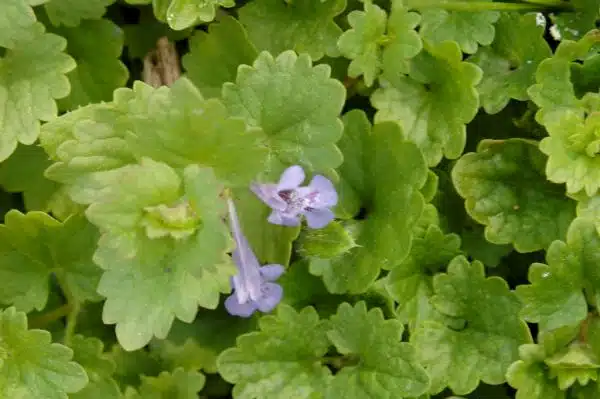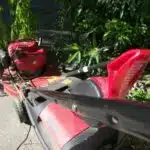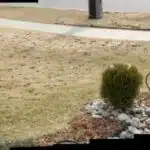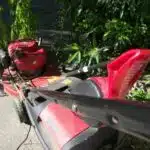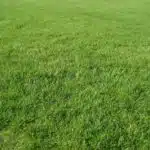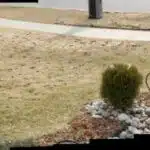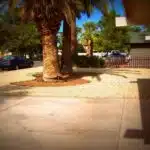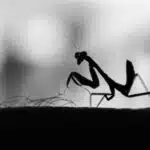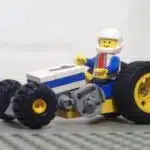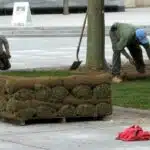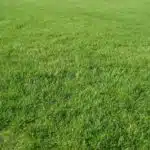Creeping Charlie, also known as ground ivy, is a common weed that grows in lawns and gardens. This invasive plant can be difficult to control once it takes hold, and it can quickly spread throughout your yard if left unchecked. If you’re dealing with creeping Charlie in your lawn or garden, you may be wondering how to get rid of it for good.
In this article, we’ll explore the different methods for controlling creeping Charlie and preventing its spread. From chemical herbicides to organic solutions, we’ll provide you with the information you need to effectively manage this pesky weed in your landscape. Whether you’re a seasoned gardener or just starting out, our tips and tricks will help you take back control of your lawn and garden from creeping Charlie’s grasp.
Identifying Creeping Charlie
Creeping Charlie, also known as ground ivy, is a pervasive weed that can be found in many parts of the world. Its distinguishing feature is its ability to spread rapidly across lawns and gardens, forming a dense mat of leaves and stems that can choke out other plants. This hardy plant is often mistaken for a type of grass due to its small, round leaves and creeping growth habit.
Creeping Charlie commonly grows in shaded areas with moist soil, such as under trees or along streams. It can also thrive in compacted soil, making it difficult to remove by hand. The plant produces a blue-violet flower in the spring that attracts bees and other pollinators. Despite its attractive appearance, Creeping Charlie can quickly become invasive if not properly controlled.
Identifying Creeping Charlie is important in order to effectively eradicate it from your lawn or garden. Its features include square stems with opposite leaves that are scalloped and hairy. These leaves have a distinctive aroma when crushed that resembles mint or thyme. Understanding the common areas of growth and characteristics of this plant will help you develop an effective plan for getting rid of it.
Understanding The Plant’s Characteristics
Creeping Charlie, scientific name Glechoma hederacea, is a perennial weed native to Europe and parts of Asia. It is easily identified by its prostrate growth habit, round to kidney-shaped leaves, and small, two-lipped blue flowers. To control Creeping Charlie, several methods can be employed including manual removal, mulching, and chemical control. Where chemical control is used, pre- and post-emergent herbicides are recommended for best results.
Identifying Creeping Charlie
As you walk through your lawn, you might notice a weed with rounded leaves and small purple flowers. This plant is commonly known as creeping Charlie, a fast-growing weed that can quickly take over an entire yard. Identifying creeping Charlie can be challenging, but there are some identification techniques that can help. One common misconception is that the plant only grows in shady areas; however, it can also thrive in full sun.
To identify creeping Charlie accurately, start by examining the leaves closely. The leaves are round or kidney-shaped and have scalloped edges. They grow opposite each other along the stem and emit a distinct odor when crushed. Another identifying characteristic is the small purple flowers that bloom from late spring to early summer. Additionally, creeping Charlie has square stems with fine hairs and roots that spread horizontally underground.
In conclusion, understanding the characteristics of creeping Charlie is crucial to effectively control its growth in your yard. Identification techniques such as examining the shape of the leaves and flowers, checking for an unpleasant odor when crushed, and looking at its stems’ texture can help distinguish it from other plants. By debunking common misconceptions about this weed’s preferred growing conditions, homeowners will be better equipped to tackle this invasive species before it takes over their lawns completely.
Controlling Creeping Charlie
Understanding the characteristics of Creeping Charlie is just the first step in managing this invasive weed. Once identified, homeowners must take steps to control its growth and prevent it from overtaking their lawns. There are different species of Creeping Charlie, but they all share similar growth patterns and habits. It spreads through underground stems that can quickly take root and develop new plants, making it challenging to control.
One way to control Creeping Charlie is by using natural predators like insects or fungi that feed on the weed. Insects such as the creeping Charlie weevil or the flea beetle can help reduce the plant’s population. Another option is applying herbicides specifically designed to target this weed while not harming other plants nearby. However, caution should be taken when using herbicides as they can also harm beneficial insects and pollinators.
In addition to these methods, homeowners can also take preventative measures to stop Creeping Charlie from growing in the first place. This includes maintaining healthy soil with proper fertilization, mowing regularly at a higher setting to shade out weeds, and planting grasses or other plants that compete with Creeping Charlie for resources. By combining these approaches, homeowners can effectively manage this invasive species without harming the environment or their lawn’s overall health.
The Damage Caused By Creeping Charlie
Assessing the damage caused by creeping charlie is crucial to understanding the ecological impact of this invasive species. This plant, also known as ground ivy, can spread rapidly and smother other plants in its path. It grows aggressively in lawns, gardens, and natural areas, making it difficult to control once established.
The roots of creeping charlie are shallow but extensive, allowing it to quickly cover large areas of soil. As it grows, it forms a dense mat that can choke out desirable vegetation. Additionally, the plant produces chemicals that inhibit the growth of other plants around it. This leads to a reduction in biodiversity and can have negative effects on local ecosystems.
The damage caused by creeping charlie is not limited to plants alone. The plant can also be harmful to animals that graze on affected areas. The leaves contain chemicals that can cause digestive issues in livestock and wildlife. As such, controlling this invasive species is essential for maintaining healthy ecosystems and ensuring the well-being of both plants and animals alike.
Moving onto prevention techniques, there are several methods one can use to prevent or limit the spread of creeping charlie.
Prevention Techniques
Mulching can be an effective tool for preventing the growth of creeping charlie in gardens. Selecting the correct type of mulch, such as bark, can help create an environment that is not conducive to the growth of creeping charlie. Additionally, proper watering practices can help minimize the spread of creeping charlie by keeping the soil moist and not allowing the weeds to dry out. Finally, when mulching and watering, it is important to be mindful of not creating an overly wet environment, as this can lead to more weed growth.
Mulching
Mulching is one of the most effective prevention techniques for controlling creeping charlie. Not only does it suppress weed growth, but it also helps to conserve soil moisture and regulate soil temperature. The benefits of mulching are numerous, making it an essential gardening practice.
When choosing the best types of mulch for controlling creeping charlie, opt for organic materials such as leaves, grass clippings, and straw. These materials decompose over time, enriching the soil with nutrients while also serving as a barrier against weed growth. Inorganic mulches like rocks or gravel can also be used; however, they do not add any nutrients to the soil.
In conclusion, mulching is an effective technique for preventing the growth of creeping charlie in your garden. It not only suppresses weed growth but also provides numerous benefits to your plants and soil health. By selecting the right type of mulch and applying it correctly, you can keep your garden healthy and free from unwanted weeds like creeping charlie.
Watering Practices
Watering practices are crucial in preventing the growth of creeping charlie. Watering frequency is critical as it affects soil moisture levels, which can either promote or inhibit weed growth. Overwatering can create a conducive environment for weeds to grow, while underwatering can cause stress to desirable plants, making them more susceptible to weed invasion.
To prevent creeping charlie from taking over your garden, water your plants deeply and thoroughly but less frequently. This practice encourages deep root growth and helps to maintain consistent soil moisture levels. Additionally, watering in the morning is recommended as it allows excess water on plant leaves to evaporate during the day, reducing the risk of fungal diseases and promoting healthy plant growth.
Incorporating proper watering practices into your gardening routine is essential for preventing the growth of creeping charlie. By maintaining optimal soil moisture levels and avoiding overwatering or underwatering, you can create an environment that discourages weed invasion and promotes the health of your desirable plants. With consistent attention to watering frequency and timing, you can keep your garden healthy and free from unwanted weeds like creeping charlie.
Hand Removal Methods
To prevent the spread of creeping charlie, it is essential to incorporate preventive measures. One effective technique is to maintain healthy turf through regular fertilization, aeration, and watering. This method will ensure your lawn is dense enough to prevent the growth of creeping charlie.
Another way to prevent the growth of this invasive weed is by using herbicides that target broadleaf plants. These herbicides contain active ingredients such as dicamba or triclopyr, which can be applied during the growing season when creeping charlie is actively growing. However, it is crucial to follow the manufacturer’s instructions when applying these chemicals.
Hand removal remains one of the most effective ways to get rid of creeping charlie. Although it requires more physical effort than other methods, hand pulling offers numerous benefits. Firstly, hand removal allows for a more targeted approach in removing only the weed and not damaging surrounding plants. Secondly, it eliminates chemical use on your lawn that may negatively impact beneficial insects and pollinators. Lastly, hand pulling allows you to detect and address any underlying issues with your lawn’s health that may contribute to weeds’ growth.
Benefits of hand removal:
- Targeted approach in removing only the weed
- Eliminates chemical use on your lawn
- Allows you to detect and address underlying issues with your lawn’s health
- Provides an opportunity for exercise outdoors
Challenges of hand removal:
- Requires more physical effort than other methods
- May not be practical for larger areas
- Must be done regularly to prevent re-growth
- Difficulties in removing all parts of the root system
Using mulch as a barrier against creeping charlie invasion has been found effective in some cases. Mulching involves covering soil around plants with organic or synthetic materials like wood chips or plastic films that block light from reaching weed seeds and suppressing their germination. In addition, mulching improves soil moisture retention and reduces erosion while providing an aesthetic appeal to your garden. However, it is important to remember that mulch is not a permanent solution and must be monitored regularly for weed growth.
Using Mulch As A Barrier
1.When considering how to get rid of creeping charlie, mulch can be an effective barrier to prevent the spread of the weed. 2.The choice of mulch is important for its efficacy, and organic mulches such as wood chips are the most effective. 3.A thick layer of mulch should be applied directly to the soil surface, and should be at least two inches deep. 4.The mulch should not be placed over existing weeds as this can encourage further growth. 5.For effective control of creeping charlie, the mulch barrier should be maintained and should be replenished as needed. 6.Regularly checking the mulch barrier and applying additional mulch as needed is a key part of controlling the weed and preventing its spread.
Choosing The Right Mulch
Mulching is an essential part of gardening, and choosing the right type of mulch can go a long way in protecting your plants. When it comes to using mulch as a barrier, selecting the appropriate kind of mulch is crucial. Different types of mulches provide different benefits, and it’s important to choose the one that best suits your needs.
There are different types of mulches available in the market, such as organic and inorganic. Organic mulches like bark chips, straw, leaves, and grass clippings are ideal for vegetable gardens as they improve soil fertility and water retention. Inorganic mulches like stones or pebbles are perfect for areas where you want to discourage weed growth but do not want to add organic matter to the soil. It’s important to consider factors such as your garden’s soil type, plant requirements, climate, and maintenance when choosing the right type of mulch.
Proper mulching techniques also play a significant role in using mulch as a barrier. Mulch should be applied at least 2-3 inches deep around plants while avoiding direct contact with the stems. This helps retain moisture in the soil while preventing weed growth around plants. Additionally, you can use landscape fabric or plastic sheeting beneath the layer of mulch to prevent weeds from growing through it. By selecting the appropriate type of mulch and employing proper techniques for its application, you can create an effective barrier that will protect your plants from unwanted weeds while retaining moisture in your garden.
In conclusion, choosing the right type of mulch and applying it correctly is crucial when using it as a barrier against unwanted weeds in your garden. Organic or inorganic types can be used depending on specific needs while following proper application techniques that promote better plant growth by reducing weed competition and retaining moisture levels needed by plants for healthy development throughout their life cycle.
Applying The Mulch Barrier
After choosing the right type of mulch to use as a barrier against unwanted weeds in your garden, it’s important to apply it correctly. Applying mulch as a barrier involves more than just spreading it around plants. Proper application techniques must be employed to ensure that the mulch serves its purpose effectively.
One of the most critical factors in applying mulch as a barrier is proper depth. Mulch should be applied at least 2-3 inches deep around plants while avoiding direct contact with their stems. This not only helps retain moisture in the soil but also prevents weed growth around plants. Additionally, the depth of mulch depends on the type used, as some types may compress over time and require topping up.
Another essential application technique is ensuring that there are no gaps between the mulch layer and the soil surface. These gaps can allow weeds to grow through and compromise the effectiveness of the mulch barrier. To prevent this from happening, you can use landscape fabric or plastic sheeting beneath the layer of mulch to provide an extra layer of protection against weed growth. By following these application techniques, you can create an effective barrier that will protect your plants from unwanted weeds while retaining moisture levels required for healthy plant growth.
Maintaining The Mulch Barrier
Now that you have learned how to apply mulch as a barrier effectively, it’s equally important to maintain it properly. Regular maintenance will ensure that the mulch barrier continues to serve its purpose and protect your plants from unwanted weeds. The following paragraphs will discuss some essential maintenance practices for your mulch barrier.
One crucial aspect of maintaining the mulch barrier is choosing the right type of mulch. Some types, like wood chips or bark, break down more quickly than others and require regular topping up. It’s also essential to keep an eye on the thickness of the layer and add more when necessary. Additionally, you should inspect the mulch layer periodically for any signs of compaction or decay and remove any debris or dead leaves.
Another important aspect of maintaining your mulch barrier is ensuring that it doesn’t get disturbed by wind or rain. Heavy rainfall can wash away the mulch, leaving your plants exposed and vulnerable to weed growth. To prevent this, you can install edging around your garden beds to keep the mulch in place during heavy rains or windy conditions.
In conclusion, proper maintenance is key to ensuring that your mulch barrier remains effective in protecting your plants from unwanted weeds. By following a regular maintenance schedule and choosing the right type of mulch for your garden, you can create a healthy environment for plant growth while minimizing weed growth. Remember to inspect your garden regularly and perform any necessary maintenance tasks promptly to keep your garden looking beautiful all year round!
Soil Amendments To Discourage Growth
The first step in controlling creeping charlie is to test the soil. Soil testing is necessary because this plant thrives in acidic soils with low fertility levels. If the soil pH level is below 6.5, it is essential to add lime to raise the pH level and make the soil more alkaline. This will discourage the growth of creeping charlie and promote healthy lawn grass.
In addition, fertilization techniques can also help reduce the growth of this weed. The application of balanced fertilizer with higher nitrogen content can encourage grass growth and suppress creeping charlie. It is best to apply fertilizer during early fall or spring when grass growth is active. However, excessive use of fertilizer can cause poor root development and promote weed growth.
Overall, proper soil amendments are crucial in preventing the growth of creeping charlie on lawns. Soil testing and fertilization techniques should be done regularly to maintain a healthy lawn. In the next section, we will discuss organic herbicides that can be used as an alternative method for controlling creeping charlie without harming other plants or animals in your yard.
Organic Herbicides
According to a recent survey, creeping charlie is one of the most common and annoying weeds in North America. It can quickly spread across lawns, flower beds, and gardens, choking out other plants and ruining the aesthetics of the landscape. Fortunately, there are natural alternatives that can help you get rid of this pesky weed without resorting to chemical herbicides.
One effective option for controlling creeping charlie is to use organic herbicides. These products are made from natural ingredients like vinegar, essential oils, and soap. They work by breaking down the cellular walls of the weed, causing it to wilt and die within a few days. Organic herbicides are generally safe for people and pets, and they don’t leave harmful residue in the soil or water supply.
If you’re looking for DIY solutions for controlling creeping charlie, there are several options available. For example, you can try manually removing the weed by hand or with a weeding tool. This method is time-consuming but effective if done consistently over time. Another option is to use homemade remedies like boiling water, saltwater solution or a mixture of vinegar and dish soap which can be sprayed on affected areas to kill off weeds naturally. These DIY methods may require more effort but offer an eco-friendly way to control creeping charlie.
Toxic chemicals used in commercial herbicides can cause harm not only to the environment but also to humans who come into contact with them. Therefore natural alternatives should be preferred wherever possible as they offer safer solutions that do not harm people or wildlife. However, if these organic remedies fail to produce desired results then chemical herbicides may need consideration which will be discussed in later sections about controlling creeping Charlie effectively.
Chemical Herbicides
Organic herbicides are often considered a safer and non-toxic alternative for controlling weeds like creeping charlie. These herbicides are made from natural ingredients and do not contain any harmful chemicals that may harm the environment or humans. Some popular organic herbicides include vinegar, corn gluten meal, and citrus oil.
When using organic herbicides to control creeping charlie, proper application techniques must be followed to ensure effective results. It is important to apply the herbicide during dry weather conditions when the plant is actively growing. This will allow the herbicide to penetrate the leaves and roots of the plant, effectively killing it off.
Non-toxic alternatives like organic herbicides can be a great option for getting rid of creeping charlie without harming the environment or putting human health at risk. However, it is important to note that these methods may take longer to see results compared to chemical weed killers. Proper timing for effective control is crucial when using non-toxic alternatives, so it’s important to be patient and consistent with your applications.
Timing For Effective Control
Ah, Creeping Charlie, the bane of every gardener’s existence. This persistent weed seems to thrive no matter what we do to stop it. However, with the right timing and precautions, we can effectively control this pesky plant. The best season to tackle Creeping Charlie is in the fall when the weed is at its weakest point.
During this time, Creeping Charlie is preparing for winter and its energy reserves are low. This makes it easier for herbicides to penetrate the plant and kill it off. It is important to note that using herbicides should be done with caution as they can harm other plants in the area. Always follow label instructions when applying any chemicals.
When attempting to control Creeping Charlie in your lawn or garden, take precautionary measures such as wearing gloves and protective clothing. This will prevent any contact with the skin which can cause irritation or an allergic reaction. By taking these steps during the best season for effective control and practicing proper precautions, you will be on your way to a healthier lawn or garden free of Creeping Charlie.
As we move forward in our battle against Creeping Charlie, it’s important to remember that timing and precautions are key to successful control. However, sometimes even our best efforts aren’t enough when dealing with large infestations. In these cases, it’s time to move on to more drastic methods of eradication which we will discuss in the subsequent section.
Dealing With Large Infestations
When dealing with large infestations of creeping charlie, it is crucial to take a proactive approach. The first step involves identifying the areas of the lawn that are most affected and removing as much of the weed as possible by hand or using a hoe. It is essential to ensure that all the roots are removed, or else the plant will regenerate.
One strategy for preventing future infestations involves companion planting. This technique aims to create an environment in which creeping charlie cannot thrive by planting other plants that can compete with it for resources or produce chemicals that deter its growth. For example, planting mint, thyme, or rosemary can help repel creeping charlie due to their aromatic oils.
An additional strategy is composting. Composting benefits the soil by improving its texture and fertility while also reducing waste. Using compost instead of chemical fertilizers can help prevent weed growth by promoting healthy grass growth and creating an environment in which desirable plants can thrive. Proper maintenance practices such as regular mowing and watering at appropriate times can also discourage creeping charlie from growing.
To effectively deal with large infestations of creeping charlie, it is essential to combine multiple strategies and take a comprehensive approach. By removing weeds manually, using companion planting strategies, composting, and proper maintenance practices, homeowners can successfully eradicate this pesky weed without harming other plants or wildlife in their lawn.
Avoiding Harm To Other Plants And Wildlife
- An effective way to avoid harm to other plants and wildlife when trying to eradicate creeping charlie is to cover plants that are near the affected area.
- Whenever possible, it is best to use organic methods to get rid of creeping charlie, as using chemical pesticides has the potential to cause harm to other plants and wildlife.
- When selecting plants to replace creeping charlie, it is important to consider the characteristics of the existing environment and to choose suitable species that are not invasive.
- Choosing native species can help to reduce the risk of introducing new invasive plants to the environment.
- Planting ground cover near the affected area can help to reduce the spread of creeping charlie.
- Integrating a variety of plant species into the ecosystem can help to reduce the chances of other plants and wildlife being harmed by the presence of creeping charlie.
Covering Plants
Plant protection is crucial in maintaining a healthy garden. While getting rid of creeping charlie, it’s important to avoid harming other plants and wildlife in the process. One effective way to do this is by covering surrounding plants during the treatment process.
There are several ways to cover your plants during the application of herbicides. You can use cardboard or plastic sheets to shield them from overspray. Alternatively, you can cover individual plants with paper bags or cloth materials while spraying around them. This will prevent any accidental harm caused by chemical drifts.
For those who prefer natural alternatives for weed control, there are also plant-based solutions that can be used without causing harm to other plants and wildlife. Cover crops such as clover and vetch can be planted in areas where creeping charlie is present, allowing these crops to outcompete the weeds naturally. Mulching with organic materials like straw or leaves can also help smother out unwanted weeds while providing added nutrients to the soil.
In conclusion, protecting other plants and wildlife during the treatment process is essential in maintaining a healthy ecosystem. Covering surrounding plants during herbicide applications and implementing natural alternatives like cover crops or mulching can effectively get rid of creeping charlie without causing harm to other living organisms in your garden. By taking these steps, you’ll not only eliminate creeping charlie but also contribute towards creating a thriving garden environment that serves both humans and nature alike.
Avoiding Chemical Use
Another way to avoid harming other plants and wildlife in your garden is by avoiding the use of chemicals altogether. While herbicides can effectively get rid of creeping charlie, they may also harm non-targeted organisms in the process. Natural alternatives and DIY remedies are available for those who prefer to take a more holistic approach to weed control.
One natural alternative that can be used instead of herbicides is vinegar. Vinegar contains acetic acid, which can kill weeds on contact. To use vinegar as a natural herbicide, mix equal parts water and vinegar in a spray bottle and spray the solution directly onto creeping charlie. Be sure to avoid spraying any surrounding plants or wildlife as the acid in vinegar can also harm them.
Another DIY remedy for controlling creeping charlie is hand-pulling. While this method may be time-consuming, it’s effective in removing the weed without causing harm to other plants or wildlife. When hand-pulling, be sure to remove as much of the root system as possible to prevent regrowth. Regularly monitoring your garden for new growth will also help you stay on top of any potential infestations before they become too widespread.
Plant Selection
As gardeners, we have a responsibility to make sure our gardening practices do not harm other plants and wildlife. One way to achieve this is by carefully selecting the plants we grow in our gardens. By choosing planting alternatives that are native to your area, you can help support local ecosystems while also reducing the need for chemical pesticides.
Natural deterrents can also be used to avoid harming other plants and wildlife in your garden. For example, some plants naturally repel pests due to their scent or taste. Planting these natural deterrents such as marigolds, chives, and basil around your garden can help keep unwanted pests at bay without resorting to harmful chemicals.
Another consideration when selecting plants is their potential invasiveness. Invasive species can quickly take over an ecosystem and displace native species. Researching the potential invasiveness of a plant before adding it to your garden can help prevent unintentional harm to other plants and wildlife in your area. By being mindful of the impact our gardening practices have on the environment, we can create beautiful gardens that also serve as safe havens for local ecosystems.
Long-Term Maintenance Strategies
Creating a schedule for long-term maintenance is crucial when it comes to getting rid of creeping charlie. This plant is known for its ability to spread rapidly, so it’s important to regularly check your lawn and garden for any signs of regrowth. Depending on the severity of the infestation, you may need to pull out the weed by hand or use chemical treatments. However, it’s important not to overuse chemicals as they can harm other plants in your garden.
Choosing the right tools is also key when it comes to maintaining a creeping charlie-free lawn and garden. Handheld weeding tools are great for removing individual weeds, while herbicides can be used for larger areas. When using herbicides, make sure to read the label carefully and follow all instructions. Always wear protective clothing and gloves when applying chemicals.
By following a schedule and using the proper tools, you can prevent creeping charlie from taking over your lawn and garden. However, if you find that your efforts aren’t working or the infestation is too severe, it may be time to consider hiring a professional. A professional landscaper will have more advanced tools and techniques at their disposal to effectively eradicate creeping charlie from your property.
Hiring A Professional
- Employing a professional lawn care service can be beneficial to those seeking to eliminate creeping Charlie, as they possess the expertise and specialized equipment necessary to effectively treat the issue.
- The downside of hiring a professional to treat creeping Charlie is it can be quite costly and may require multiple visits to achieve the desired result.
- Professional lawn care services are generally well versed in the safest and most effective methods for getting rid of creeping Charlie, as this is a common problem faced by homeowners.
- While hiring a professional may be the most convenient option, it is important to weigh the costs, as DIY solutions may be more cost effective and may even provide a better result.
Advantages Of Hiring A Professional
If you’re dealing with a creeping charlie infestation, you might be wondering if it’s worthwhile to hire a professional to help eradicate the problem. The answer is yes! There are several benefits of hiring a professional that make the cost well worth it in the end.
One of the biggest advantages of hiring a professional is their expertise and experience. Professionals have years of knowledge and training on how to identify, treat, and remove creeping charlie effectively. They know which products will work best, how to apply them correctly, and can offer tips for minimizing future growth. By hiring a professional, you can rest assured knowing your problem will be handled with care and precision.
Another benefit of hiring a professional is cost effectiveness. While it may seem like an expensive option at first glance, in reality, professionals are often able to handle the problem more efficiently than homeowners attempting DIY methods. This means less wasted time and money on ineffective treatments or repeated attempts at eradication. In the long run, hiring a professional could actually save you money by ensuring that the problem is taken care of quickly and thoroughly.
In conclusion, if you’re struggling with creeping charlie in your lawn or garden, don’t hesitate to consider hiring a professional for help. The benefits they offer such as expertise and cost effectiveness make them an excellent investment for anyone looking to get rid of this pesky weed once and for all.
Disadvantages Of Hiring A Professional
While hiring a professional to deal with creeping charlie infestation has many benefits, it also has some disadvantages. One of the main drawbacks is the cost. Hiring a professional can be expensive, and some homeowners may not have the budget to afford their services. Additionally, some professionals may require additional fees for follow-up visits or treatments, which can add up quickly.
Another disadvantage of hiring a professional is that it removes the opportunity for homeowners to learn how to deal with creeping charlie themselves. By attempting DIY techniques, homeowners can gain knowledge and experience on how to identify and treat this weed in case it returns in the future. Furthermore, DIY techniques are often more affordable than hiring a professional and can provide a sense of satisfaction when successful.
Lastly, not all professionals are created equal. While some may have years of experience and expertise in dealing with creeping charlie, others may not be as skilled. It’s important to do research and find a reputable professional before hiring them to ensure that they have the necessary knowledge and tools to handle your specific situation effectively.
In conclusion, while hiring a professional has its benefits such as expertise and efficiency, it also has its drawbacks such as cost and missed opportunities for DIY learning. Homeowners should carefully evaluate their options before deciding whether or not to hire a professional for their creeping charlie infestation.
Conclusion: Taking Control Of Creeping Charlie
After understanding the importance of hiring a professional to get rid of creeping charlie, it is crucial to take control of the situation. Prevention techniques can help minimize the spread of this invasive weed. The first step towards preventing creeping charlie from invading your lawn is by maintaining healthy turf. A well-fertilized and thick lawn will leave no space for weeds like creeping charlie to grow.
Another way to prevent creeping charlie from taking over your yard is through proper watering. Overwatering can weaken your grass and create ideal conditions for creeping charlie growth. It is best to water deeply but infrequently, allowing the soil to dry out between watering sessions.
Long-term maintenance is also crucial in controlling creeping charlie. Regular mowing at the correct height can reduce the spread of this weed by inhibiting its flowering and seed production. Additionally, manual removal or spot treatment with herbicides can help keep creeping charlie in check.
Taking control of creeping Charlie requires a combination of prevention techniques and long-term maintenance strategies. By keeping your lawn healthy, properly watering it, and regularly maintaining it through mowing and herbicide application as needed, you can keep this invasive weed at bay and enjoy a lush, green lawn.
Conclusion
Creeping Charlie, also known as ground ivy, is a common weed that can quickly take over lawns and gardens. Identifying this plant is crucial in order to effectively control it. Understanding its characteristics and the damage it can cause is also important. Prevention techniques such as proper lawn care and regular maintenance can help keep creeping Charlie at bay. Hand removal methods can be effective but must be done carefully to avoid harming other plants and wildlife.
Long-term maintenance strategies such as overseeding and regular mowing can further prevent creeping Charlie from taking hold. However, if the infestation is severe, hiring a professional may be necessary. Taking control of creeping Charlie requires patience and diligence, but with the right techniques and maintenance practices, it is possible to successfully rid your lawn or garden of this pesky weed.
As the saying goes, “a stitch in time saves nine.” This adage rings true when dealing with creeping Charlie. The sooner you identify and address an infestation, the easier it will be to control it. Don’t let this tenacious weed go unchecked – take action now so that you can enjoy a lush, healthy lawn or garden for years to come.
Image Credits
- “Glechoma hederacea CREEPING CHARLIE” by gmayfield10 (featured)

